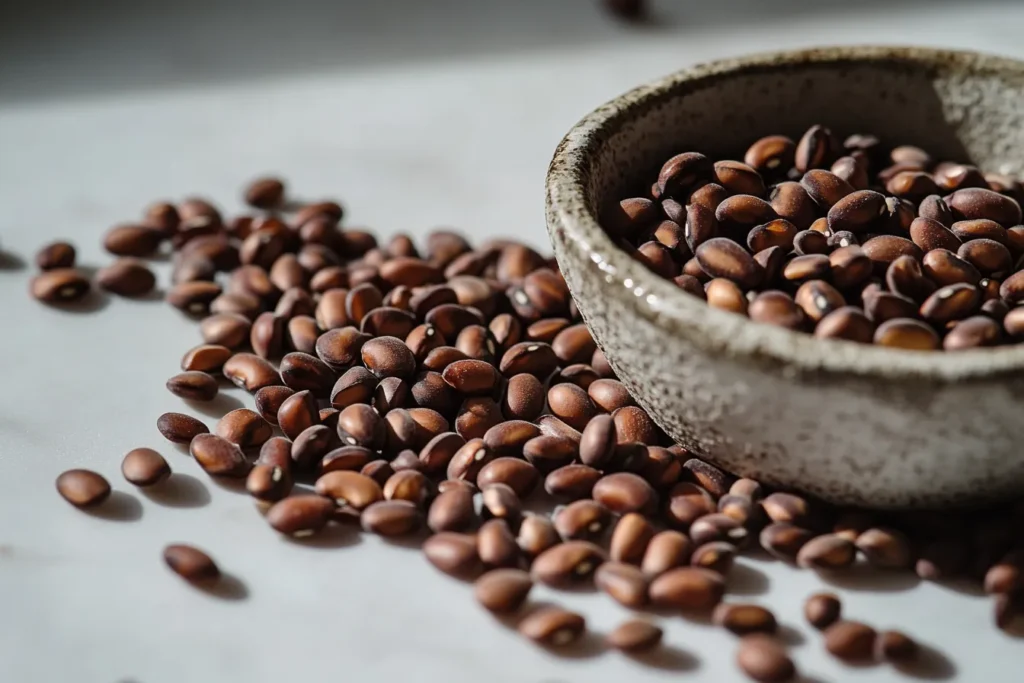Table of contents
Imagine biting into a golden, crispy falafel that’s not only delicious but also packed with an unexpected nutritional punch. That’s exactly what you get with lupin falafels. This innovative take on the traditional Middle Eastern dish is making waves in the culinary world, combining the beloved flavors of classic falafels with the health benefits of lupin beans. In this article, we’ll dive deep into the world of lupin falafels, exploring their origins, nutritional benefits, preparation methods, and why they’re becoming a favorite among health-conscious food lovers and curious gourmands alike.
The Rise of Lupin in Modern Cuisine
What Are Lupin Beans?
Lupin beans, also known as lupini beans, have been around for centuries, but they’re experiencing a renaissance in the health food scene. These little yellow legumes are nutritional powerhouses, boasting high protein content and a low glycemic index. They’re like the cool new kid on the block that everyone wants to hang out with!
However, it’s important to note that lupin beans aren’t just a passing fad. Their rise to prominence is backed by solid nutritional science and a growing demand for plant-based protein sources. Consequently, we’re seeing lupin beans pop up in various forms across the food industry.

From Ancient Snack to Modern Superfood
Historically, lupin beans were a humble snack in Mediterranean countries. Now, they’re strutting their stuff in everything from flour to falafel mix. It’s like they’ve gone from wallflower to prom queen overnight!
For example, in ancient Rome, lupin beans were often eaten as a pickled snack. Later, they became a staple in many Mediterranean and Middle Eastern diets. Today, however, they’re being incorporated into a wide range of products, including protein powders, baked goods, and, of course, our star of the show – falafels.
The Nutritional Goldmine of Lupin Falafels
Protein-Packed Powerhouse
Lupin falafels are not messing around when it comes to protein. They’re like the bodybuilders of the legume world, flexing their nutritional muscles with every bite. Here’s a quick look at their nutritional profile:
| Nutrient | Amount per 100g |
|---|---|
| Calories | 190 |
| Protein | 15g |
| Fiber | 8g |
| Fat | 9g |
| Carbs | 16g |
Additionally, lupin falafels are rich in essential amino acids, making them a complete protein source. This is particularly beneficial for vegetarians and vegans who might struggle to get all their essential amino acids from plant-based sources.
Low-Carb, High-Fiber Wonder
For folks watching their carb intake, lupin falafels are a godsend. They’re like the ninja of the falafel world – sneaking in all that fiber while keeping carbs on the down-low.
Not only that, but the high fiber content also means that lupin falafels can help promote feelings of fullness and aid in digestion. Therefore, they’re an excellent choice for those looking to manage their weight or improve their gut health.
Crafting the Perfect Lupin Falafel
Ingredients That Make Magic
Creating lupin falafels is like conducting a tasty orchestra. You’ve got your star player – lupin flour – backed by a supporting cast of herbs, spices, and veggies. It’s a flavor fiesta in your mouth!
Typically, a lupin falafel recipe might include:
- Lupin flour
- Onions
- Garlic
- Fresh herbs (parsley, cilantro)
- Spices (cumin, coriander, paprika)
- Baking powder
- Salt and pepper
Of course, the beauty of homemade falafels is that you can adjust the ingredients to suit your taste preferences. Some people like to add a kick of heat with some chili flakes, while others might throw in some lemon zest for a citrusy twist.
The Art of Blending and Shaping
Getting that perfect falafel texture is an art form. Too dry, and you’ve got sand balls. Too wet, and it’s falafel soup. It’s all about finding that Goldilocks zone of just right!
To achieve the perfect consistency, start by blending your dry ingredients. Then, gradually add water until the mixture holds together when squeezed. After that, let the mixture rest for about 30 minutes to allow the flavors to meld and the flour to absorb the moisture.
While shaping your falafels, remember that size matters. Smaller falafels tend to cook more evenly and develop a better crust-to-interior ratio. Above all, consistency in size is key to ensure even cooking.

Cooking Methods: From Traditional to Trendy
Deep-Fried Delights
There’s something magical about the sizzle of a falafel hitting hot oil. It’s like a crispy, golden hug for your taste buds. But let’s be real, it’s not exactly winning any health contests.
Deep-frying gives lupin falafels that classic crispy exterior and soft, fluffy interior that many falafel lovers crave. However, it’s important to maintain the right oil temperature (around 350°F or 175°C) to prevent the falafels from absorbing too much oil.
Baked Beauties
For the health-conscious crowd, baking lupin falafels is like finding a unicorn – it’s rare, it’s beautiful, and it’s almost too good to be true. You get all the flavor with none of the guilt!
To bake lupin falafels, preheat your oven to 375°F (190°C). Lightly brush the falafels with oil and bake for about 20-25 minutes, flipping halfway through. While they might not achieve the same level of crispiness as their deep-fried counterparts, they’re still delicious and significantly lower in fat.
Air Fryer Adventures
Air fryers are the new cool kids in the kitchen, and they’re perfect for lupin falafels. It’s like having your cake and eating it too – crispy exterior, tender interior, and barely any oil used.
To air fry your lupin falafels, preheat the air fryer to 375°F (190°C). Lightly spray the falafels with oil and cook for about 15 minutes, shaking the basket halfway through. The result? Crispy, golden falafels that are healthier than deep-fried versions but crunchier than baked ones.

Serving Suggestions: Beyond the Pita
The Classic Wrap
Stuffing lupin falafels in a pita with all the fixings is like giving your taste buds a warm hug. It’s comfort food with a healthy twist.
To create the perfect lupin falafel wrap, start with a warm pita bread. Add a layer of hummus, then place 3-4 falafels inside. Top with fresh vegetables like tomatoes, cucumbers, and lettuce. Finally, drizzle with tahini sauce and a squeeze of lemon for that authentic Middle Eastern flavor.
Salad Topper Extraordinaire
Crumble these bad boys over a salad, and suddenly your boring greens are ready for the red carpet. It’s like sprinkling little nuggets of flavor and protein all over your plate.
For a delicious lupin falafel salad, start with a base of mixed greens. Add chopped tomatoes, cucumbers, and red onions. Crumble 2-3 lupin falafels over the top. Drizzle with a lemon-tahini dressing and sprinkle with some za’atar spice blend for an extra Middle Eastern kick.

Appetizer Awesomeness
Serve mini lupin falafels as appetizers, and watch your guests fight over the last one. They’re like the popular kid at a party – everyone wants a piece!
To serve lupin falafels as appetizers, make them slightly smaller than usual. Arrange them on a platter with a variety of dipping sauces like hummus, tzatziki, or spicy harissa. Garnish with fresh herbs and lemon wedges for a beautiful presentation.
Lupin Falafels for Special Diets
Vegan Victuals
Vegans, rejoice! Lupin falafels are here to answer your protein prayers. They’re like little plant-based superheroes, swooping in to save the day.
Since lupin falafels are naturally vegan, they’re an excellent protein source for those following a plant-based diet. They can be easily incorporated into vegan meal plans, providing essential nutrients that might be challenging to obtain from other plant sources.
Gluten-Free Goodness
For the gluten-free gang, lupin falafels are a dream come true. They’re like finding a four-leaf clover in the world of wheat-free eats.
Lupin flour is naturally gluten-free, making lupin falafels a safe choice for those with celiac disease or gluten sensitivity. However, it’s always important to check that all other ingredients used in the recipe are also gluten-free to avoid cross-contamination.
The Environmental Impact of Lupin Farming
Sustainable Superfood
Lupin beans are not just good for you; they’re good for Mother Earth too. They’re like the eco-warriors of the legume world, fixing nitrogen in the soil and requiring less water than other crops.
Lupin plants have a unique ability to fix nitrogen in the soil, reducing the need for synthetic fertilizers. This not only improves soil health but also decreases the environmental impact of farming. Furthermore, lupin crops require significantly less water compared to other protein sources, making them a more sustainable choice in water-scarce regions.
Reducing Carbon Footprint
By choosing lupin falafels, you’re basically giving the planet a high-five. It’s a small step that can make a big difference in reducing our reliance on resource-intensive foods.
The production of lupin beans generates fewer greenhouse gas emissions compared to animal-based protein sources. Therefore, incorporating more lupin-based foods into our diets can help reduce our overall carbon footprint. It’s a delicious way to contribute to environmental conservation!
DIY Lupin Falafel Mix: A Pantry Staple
Mixing It Up at Home
Creating your own lupin falafel mix is like being a mad scientist in the kitchen – but instead of explosions, you get explosions of flavor! It’s a fun way to customize your falafel experience.
To make your own mix, combine lupin flour with your favorite dried herbs and spices. You might include dried garlic, onion powder, cumin, coriander, and a touch of baking powder. Store this mix in an airtight container, and when you’re ready to make falafels, just add water and fresh herbs!
Storage and Shelf Life
Properly stored, your homemade mix can last for months. It’s like having a flavor time capsule in your pantry, ready to transport you to falafel heaven at a moment’s notice.
Keep your DIY lupin falafel mix in an airtight container in a cool, dry place. It should last for up to 6 months. However, for the freshest flavor, try to use it within 3 months. Remember to always check for any signs of spoilage before use.
Lupin Falafels Around the World
Global Twists on a New Classic
From spicy Indian-inspired versions to Japanese fusion creations, lupin falafels are going global. It’s like they’re on a world tour, picking up new flavors at every stop.
In India, for instance, some creative chefs are incorporating traditional Indian spices like garam masala and turmeric into their lupin falafels. Meanwhile, in Japan, you might find lupin falafels served with a wasabi-infused tahini sauce or topped with pickled ginger.
Street Food Revolution
Lupin Falafels Around the World
Food trucks and street vendors are enthusiastically jumping on the lupin falafel bandwagon. In fact, it’s like the cool new street food that everyone’s lining up for!
From New York to London, and Berlin to Sydney, innovative food trucks are creatively serving up lupin falafels with unique twists. For instance, you might find them deliciously stuffed into tacos, topped with spicy kimchi, or served alongside crispy sweet potato fries. Consequently, the street food scene is proving to be a perfect testing ground for new and exciting lupin falafel combinations. Additionally, this trend not only showcases the versatility of lupin but also encourages food lovers to explore diverse culinary experiences. Therefore, whether you’re at a local food festival or a bustling market, be sure to keep an eye out for these delectable and inventive lupin falafel offerings!
The Future of Lupin in Food Innovation
Beyond Falafels: What’s Next?
The sky’s the limit for lupin beans. We’re talking lupin pasta, lupin milk, maybe even lupin ice cream! It’s like watching a star being born in the food world.
Innovative food companies are already experimenting with lupin in various products. For example, some pasta manufacturers are incorporating lupin flour into their recipes to boost the protein content. There are also lupin-based protein powders hitting the market, catering to fitness enthusiasts looking for plant-based alternatives.
Research and Development
Food scientists are all over lupin like bees on honey. Consequently, the culinary world is buzzing with anticipation. Who knows what delicious innovations they’ll cook up next? It’s undoubtedly an exciting time to be a food lover!
Moreover, researchers are diligently exploring the potential of lupin in a wide array of products, ranging from meat alternatives to gluten-free baked goods. In addition to these culinary applications, there’s also significant research being conducted on the potential health benefits of lupin. For instance, studies are investigating its effects on blood sugar control and heart health. As a result of these ongoing studies, we can expect to see an even greater variety of lupin-based products hitting the shelves in the near future. Furthermore, as more research is published, it’s likely that lupin will continue to gain popularity not only for its versatility but also for its health-promoting properties. Therefore, keep your eyes peeled for new and exciting lupin innovations in the coming years!
Conclusion: Embracing the Lupin Revolution
Lupin falafels are more than just a trendy food – they’re a delicious gateway to a more sustainable, healthier way of eating. Whether you’re a die-hard falafel fan or a curious foodie, these protein-packed bites are worth a try.
By choosing lupin falafels, you’re not only treating your taste buds but also making a positive choice for your health and the environment. They offer a delicious solution to many dietary needs, from high-protein to gluten-free, vegan to low-carb.
Moreover, the sustainability aspect of lupin farming adds another layer of appeal to these tasty morsels. In a world increasingly concerned with the environmental impact of our food choices, lupin falafels offer a delicious way to reduce our carbon footprint.
So go ahead, take a bite of the future – it tastes like crispy, golden lupin falafels! Whether you’re making them at home, ordering them from a food truck, or picking up a pack at your local supermarket, you’re participating in a food revolution that’s good for you and good for the planet.
Remember, every great food journey begins with a single bite. So why not make your next bite a lupin falafel? You might just find yourself falling in love with this protein-packed, eco-friendly, and utterly delicious twist on a classic. Here’s to the lupin revolution – may it continue to grow, one falafel at a time!
FAQs
- What is a falafel made of?
Falafel is a delicious blend of chickpeas or fava beans, aromatic herbs like parsley and cilantro, savory garlic and onions, and a mix of warm spices. Check out our guide to its core ingredients! - Are lupin falafels suitable for people with nut allergies?
While lupins are legumes, not nuts, some people with peanut allergies may be sensitive to lupins. It’s best to consult with a doctor if you have concerns. - Can I freeze lupin falafels?
Absolutely! They freeze beautifully. Just make sure to thaw and reheat them properly for that perfect crispy exterior. - How do lupin falafels compare to traditional chickpea falafels in taste?
Lupin falafels have a slightly nuttier flavor but are just as satisfying. Many people find them even more delicious! - Are lupin falafels keto-friendly?
With their low carb content, lupin falafels can fit into a keto diet when consumed in moderation.

